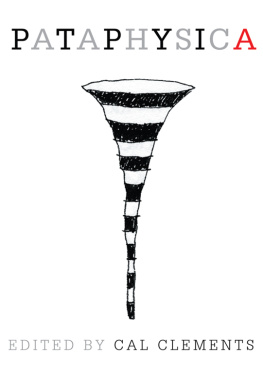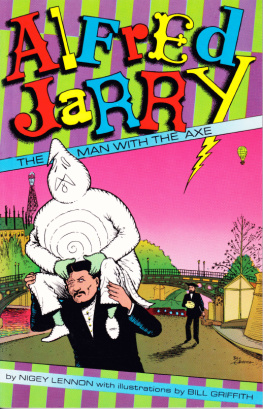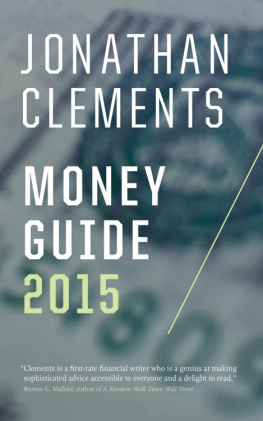Pataphysica
Edited by Cal Clements
Writers Club Press
San Jose New York Lincoln Shanghai
Pataphysica
All Rights Reserved 2002 by Cal Clements
No part of this book may be reproduced or transmitted in any form or by any means, graphic, electronic, or mechanical, including photocopying, recording, taping, or by any information storage retrieval system, without the permission in writing from the publisher.
Writers Club Press
an imprint of iUniverse, Inc.
For information address:
iUniverse, Inc.
5220 S. 16th St., Suite 200
Lincoln, NE 68512
www.iuniverse.com
ISBN: 0-595-23604-9
ISBN13: 978-1-4697-0299-5 (ebook)
Contents
Cal Clements
In my quest to do nothing valuable in life, I decided to announce my willingness to entertain papers by anyone calling him or herself a pataphysician or pataphysicist. Given the scarcity of such creatures, I had hoped to tell the world that I was engaged as an editor of an esoteric scholarly journal while having nothing to edit. Furthermore, I had arranged with myself that I could be on vacation any day that an essay did not arrive in my mailbox. By mailbox, I mean the electronic mailbox in my computer, which I had programmed to emit the sound of a bell upon the arrival of new mail. Almost immediately I was disappointed. My computers bell rang daily. Flocks of papers and scores of drafts presented themselves for my labor. Who knew there were so many cruel miners out there lusting for the dust of pataphysics? Of course I was terrible in my responses. Word must get out that I was an ogre under the bridge. Most importantly, I wanted to get back to my holiday. At this point, I would settle for a day off.
A project once started must be seen to its conclusion. Is this not a fundamental principle? It seemed so to my otherwise amoral sensibility.
I spent the better part of the year tending to my e-mail. A disaster. I had to figure out some way to depress the worlds enthusiasm. I created needless technical problems, threw doubt upon my competence, and insisted upon an obscure style guide. My vision entertained the possibility of printing a one-page collection of sundry pataphysica in a microscopic font, thereby reducing proofreading, indexing, and printing needs. The page count, however, mounted. Far too many incandescent thoughts assailed me. All too often, I had to smile in wonder, rejoice in the fertility of the science, and include yet another contribution. The sheer profundity of the material turned my slapdash project into an immortal book.
In the end, I did select the smallest number of works possible. These are they.
With any group of items the first question is one of organization. How are they ordered? Do they ascend or descend in value or quantity of words? Do they introduce a theme along general lines and then develop it toward specific ends? Do they move chronologically (thereby mirroring the causation that is rumored to attend history)? Are they color-coded? My catalog of this years work attempts to belie any organizing agenda. I left the essays in a heap. They are simply growing wild. Now when I read over the table of contents, I fill my lungs with the air of ethernity. In these moments, I feel as though I were a Heathcliff out on a stormy night, his back to a tree, his head craned back so as to look upon a dizzying array of tossing limbs. Try this yourself when you get to that page.
Meanwhile, let me provide what introductions cannot be avoided.
Pataphysics is nothing if not practical. It was always with an eye toward the working pataphysicist, the practicing pataphysician, that I selected the pieces. I had hoped to compile a set of field notes, a manual as useful as Heros Pneumatica, or something to aid ongoing research into the rude machine. While there is nothing particularly diagrammatic among these papers, quite a few of the pieces work with sublime spatial dimensions. This is true of the opening piece, Scott Magelssens meditation on Witkiewicz Pure Form stage plays. Magelssen scours his travel diaries in order to compose a partial autobiography that elucidates the tension between physical and metaphysical spaces. Brian Parshall discusses Jarrys interest in the infinite sphere, the circle without circumference. Throughout the article, he provides a depth that will charm historians. Pataphysicists will be pleased to discover David Daniels 25 principles for working with bodies in motion. The pataphysician MEZ offers hints for tuning the language of time machines. The relation between time-space-language is further explored in Chris Frittons contribution. The layout of his text requires a special attention that may or may not be provided by our publisher. If all the letters do not line up properly, you may heap the blame squarely upon my shoulders (since I hired the least expensive publisher available). In a telegraphic letter to Jarry, Brisbane di Milo celebrates the space of the baseball diamond at a metaphysical and mythological level. Ric Royer shares some of the frustrations of working with higher space in an extract from the much larger Zero s Wedding. My own piece on Duchamps infrathin must be regarded as a gift from the gods, a triumph in pataphysical scholarship, extremely insightful, and so forth. It explores elemental parallelism, hollow paper, shadows, nocturnal illumination, and molds en route the fourth dimension. As a result of these readings, you may expect your everyday practice of pataphysics to be enlightened, if only by some small degree.
Knowing that many of you are working on machines that generate laughter, I have included Anthony Enns discussion of humor. Enns traces Jarrys own style of producing this outpouring not to Bergson, as is common, but to Nietzsche.
Included also are two essays on pataphysicians whom we wish to bring to your (renewed) attention. M. Alejandro Riberis introduces Julio Cortzar. His essay has the distinction of having been written initially in Spanish, translated by the author into French, and then translated by Mark Andr Singer into English. Finally, we offer John van der Does thoughts on Boris Vian. My first act of freedom, once this publication goes to press, will be to read Blues for a Black Cat. As it may take me some time to get through the tome, a few seasons may pass before the next edition of Pataphysica may be attempted. Please be patient andin order to minimize the exercise of patienceread this edition very carefully.
While all errors in the text are wholly my fault, I have been immeasurably assisted by the keen eyes of Roumiana Velikova. She gave the first draft a thorough cleaning. If we groan less at the inconsistencies herein (although I hear some readers enjoy inconsistency) it is due to Roumianas care and diligence. Further super-vision has been provided by Mark Andr Singer of the Mechanics Institute of San Francisco and Professor Joan Copjec of The Center for the Study of Psychoanalysis and Culture at SUNY Buffalo.
I wish to also thank Gray Kochhar-Lindgren, Associate Professor of English at Central Michigan University, for helping me announce Pataphysica to the world. He may have done his job too well. Finally, two pataphysicans sent their books to me. Jerome McGann sent his sophisticated and lucid critical work, Radiant Textuality. David Daniels, whose work appears in this edition, sent The Gates of Paradise, which is a masterpiece of concrete poetry. Both books are excellent and heartily recommended. They have been added to my library.
Scott Magelssen
Nothing beautiful can exist in this world! The human animal always interferes and spoils everything!
S.I. Witkiewicz
Who was Stanislaw Ignacy Witkiewicz, the early twentieth-century artist whose Pure Form stage plays and paintings distorted nature into such disturbing answers to reality? How is it that his portraits, elongating or compressing his models facial features into haunted visages swimming in psychedelic whorls of color, seem to stare out at the viewer through liquid eyesas if the canvas were some membrane between our own rational world and some other multidimensional universe? And why is it that there are certain performance events in our lives, perhaps like those practiced by Witkiewicz, that can strike us so profoundly, and yet defy our ability to rationally talk about them afterward, lacking as we do the language to express the movement of thought we experienced?
Next page











